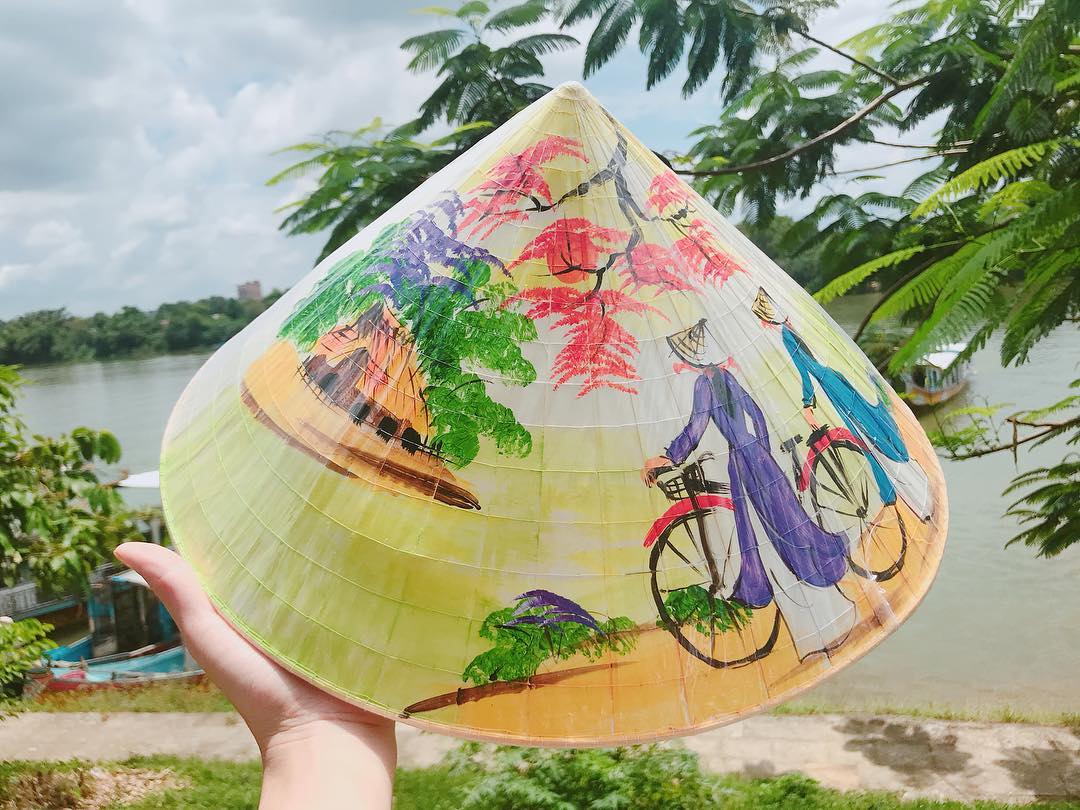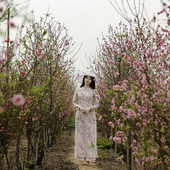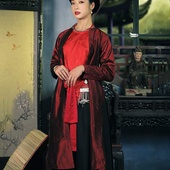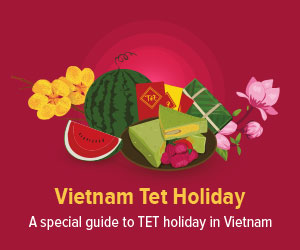Vietnam Conical Hat (Non La)
Vietnamese's Famous Conical Hat
Non la (the palm-leaf conical hat) remains a timeless symbol of the Vietnamese people, transcending age, gender, and ethnic differences.
History & Legends
Like many traditional garments in Vietnam, the Non la has a rich history tied to the legend of rice cultivation. According to this tale, a giant woman from the heavens protected humanity from a torrential flood, donning a hat made from the leaves of four round-shaped plants to shield herself from the rain. After her departure, the Vietnamese constructed a temple in her honor, venerated as the Rain-shielding Goddess.
 Women in Non la at Dong Ba Market. Photo: @soaipham
Women in Non la at Dong Ba Market. Photo: @soaipham
The Vietnamese crafted hats inspired by the Goddess’s headwear by stitching palm leaves together, resulting in what is now recognized as Non la. This iconic hat has become deeply intertwined with the lives of farmers, from the rice paddies to the rivers, where boat men and women proudly wear it.
How It Is Made?
Non la is created using simple and readily available materials, including palm leaves, bark from the Moc tree, and bamboo. These hats are widely sold, and numerous traditional villages offer high-quality conical hats to tourists. For instance, Chuong Village, located about 30 kilometers southwest of Hanoi, has been renowned for its handcrafted palm-leaf conical hats for centuries. Particularly notable is the ‘Non bai tho’ (poem hat) from Hue, which features designs of bamboo or verses hidden beneath the leaf layers, revealed only in sunlight.
 Non bai tho. Photo: @phuongloan2302
Non bai tho. Photo: @phuongloan2302
Different Types of Non La
The Non la has evolved significantly since its first recorded appearance over 3,000 years ago. Traditionally, it was categorized into three main types: Non muoi (or ‘Non ba tam’, ‘Non quai thao’), medium-sized hats, and head-hats. The original versions were flat and round, approximately 1 meter in diameter, and often featured a chin-strap made of rattan (the Non quai thao). This particular style became an essential accessory for women in rural areas attending festivities or pagodas, as well as for performers at the Lim Festival in Bac Ninh.
The head-hat is the smallest variation, distinguished by its lower selvage. Different types of Non la were also associated with social status; certain styles were designated for the elderly, the affluent, and mandarins, while others were made for children, soldiers, and monks. Each type showcases unique shapes and designs, often varying by region.
Non la serves multiple purposes: it provides sun protection, acts as a basket for market-going women, functions as a fan for farmers on hot summer days, and can even be a cherished keepsake. The image of a young lady adorned in Non la and Ao dai epitomizes Vietnam’s beauty. Furthermore, Non la represents the national spirit and is a favored souvenir for travelers seeking a piece of Vietnamese heritage.
How do I do to get these hats in bulks to South Africa....how much per hat stock price

11 Horoscopes In The Year Of The Dragon
The dragon year can be a booster-for-all for all other zodiacs.

Vietnam's 5 Most Important Festivals & Travel Tips
Vietnam's cultural richness stands out with a variety of traditional festivals.

Kinh People
Vietnam is known for its cultural diversity with 54 ethnic groups, in which, Kinh or Viet people accounts for nearly 90% of the whole population.






